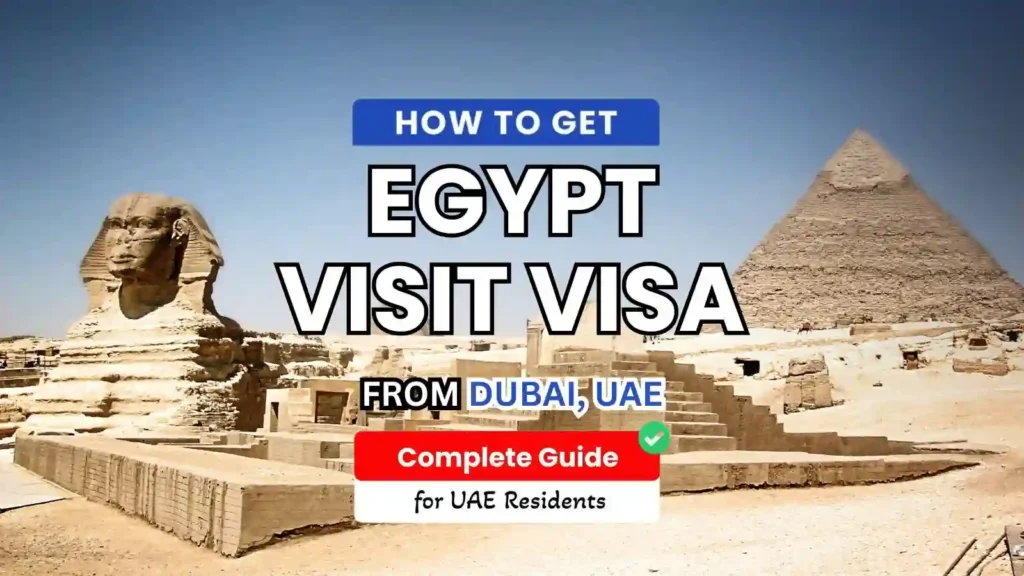
Egypt has a way of making history feel close enough to tap—pyramids rising through the city haze, the Nile drifting past at golden hour, and Red Sea reefs so bright your camera gives up trying to be subtle. If you’re flying from the UAE, the trip itself is easy. The smooth part comes when your visa plan is as tidy as your packing cube. A little prep now means more time for markets, museums, and that first gasp when Giza appears in the distance.
Do you need a visa?
Start with your passport, not your residence card. If you hold an Emirati passport, you can usually enter Egypt without a visa for short visits. If you’re an expatriate living in the UAE, you’ll likely need permission in one of three forms: visa on arrival, an eVisa arranged online, or a consulate-issued visa collected in the UAE. The rule of thumb is simple but crucial—check by nationality, not only by where you live. Two minutes of checking official guidance beats two hours of airport stress and a frantic search for a printer.
Pick the right visa
Match the visa to the trip you actually plan to take. A tourist visa fits classic vacations, family visits, and beach time. If your calendar says meetings, exhibitions, or negotiations, a business visa is the honest choice. There’s also a transit visa for short stopovers when you’re barely leaving the terminal. You don’t need poetry here—just a clear, sensible purpose. Officers appreciate a plan that makes sense at a glance: where you’re staying, for how long, and what you’re doing.
Choose your application path
Your passport decides the door you use. Some nationalities can pay at the airport and receive a visa on arrival; it’s quick if you have the right documents and the fee handy. Others qualify for the eVisa, which you complete through the official portal and receive by email—clean, fast, and less paper to juggle. If neither option applies to you, plan for an appointment at the Egyptian Consulate in Dubai or Abu Dhabi. Knowing your route early turns the whole process into a simple timeline instead of a last-minute sprint.
Prepare a neat document set
Think of your paperwork like a well-packed carry-on: visible, complete, and easy to reach. You’ll want a passport valid for at least six months from your arrival, and a UAE residence visa that comfortably outlasts your return date. Add a completed application form, a recent passport photo, proof of return or onward travel, and accommodation details—hotel confirmations or a host’s address and phone number. Some travelers are asked for proof of funds, so keep recent bank statements ready and readable. Make the small things match: names, dates, booking references. When details line up, your application reads like a clear map, not a puzzle.
Apply the right way, at the right time
If you’re eligible for visa on arrival, keep the fee in the requested currency and your documents within easy reach; you’ll save time at the counter. If you qualify for the eVisa, use the official site, enter names exactly as they appear in your passport, and upload straight, legible scans. If the consulate is your path, book an appointment, bring originals plus copies, and follow their checklist carefully. Build in a buffer, because holidays, travel peaks, and routine checks can add days. Early beats perfect; you can adjust hotel dates, but you can’t out-run a processing queue.
Understand fees and timing
Fees vary by visa type and length, and payment methods depend on how you apply. eVisa fees are paid online, consulate fees follow their own rules, and airport fees are paid on arrival. Processing time also depends on your route. eVisas are often quick, consulate applications can take longer, and busy seasons slow everything. Give yourself enough runway so your only countdown is to departure, not to a collection window. Your future self will thank you for planning like a pro.
Get ready for travel day
Keep your essentials in one easy pocket: passport, printed eVisa approval if you have one, return ticket, hotel details, and travel insurance. If an officer asks about your plan, keep your answer crisp and true—how many days, where you’ll stay, and when you’ll leave. If you’re splitting time between Cairo and the Red Sea, say so. Save your hotel address in your notes and your maps app; roaming and airport Wi-Fi love to play hide-and-seek exactly when you need them. Calm, clear answers move you forward. Long speeches invite extra questions.
Avoid common snags
Most setbacks come from small, fixable things. Watch for misspelled names, mismatched dates, and fuzzy scans. Use photos that meet the rules; a neat image is surprisingly powerful in a sea of paperwork. If a bank statement shows a large new deposit, add a brief note so it doesn’t look mysterious. Don’t lock in non-refundable flights before approval if your nationality needs an advance visa. And skip cropped screenshots that hide dates or amounts—full pages look professional and save you follow-ups.
Pack a few “future-you” favors
Print the key documents even if they live on your phone; batteries love to die at awkward times. Carry two payment cards from different networks and switch on transaction alerts. If you’re diving, quad-biking, or heading into the desert, make sure your insurance actually covers those adventures. A universal adapter, small power bank, and a spare passport photo weigh almost nothing, yet they solve problems that feel huge when you’re jet-lagged.
Final thoughts
Egypt is easy to love and, from the UAE, easy to reach. Make it just as easy to enter. Confirm the rules for your nationality, pick the visa that fits your plan, and submit a clean, consistent set of documents with time to spare. Do that, and immigration becomes a formality, not a hurdle. Then you can get back to the good decisions—museum first or market first, felucca at sunset or sunrise, and whether that “extra” memory card is still extra after your first glimpse of the pyramids through the morning haze.
